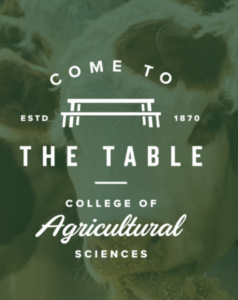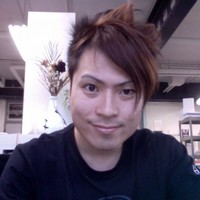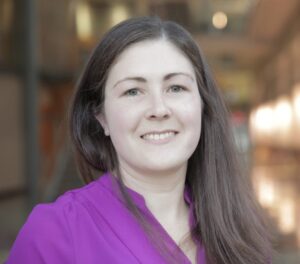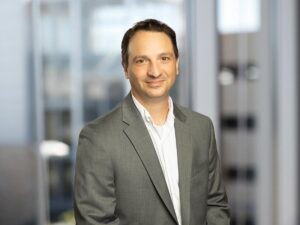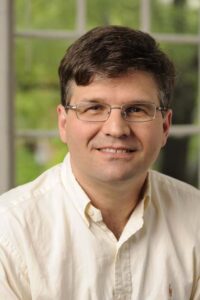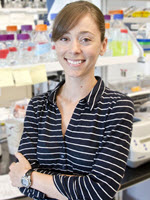qCMB Symposium

When:
June 12th and 13th, 2023
Over 50 Posters in Two Sessions!
Poster Numbers and Titles Here!
Register Here:
Registration Form
Deadlines for Registration:
Contributed and Lightning Talks – May 15th
Poster Sessions – June 1st
General Attendance – June 6th
This is an in-person only symposium
We will have two days of in-person lectures and a student poster session with prizes for those voted best!
Invited Speakers
We have experts scheduled throughout the day to give lectures on a variety of topics involved in quantitative biology. See below for their bios!
Poster Session
All undergraduate students, graduate students and post-docs are welcome to present on a topic of their choosing!
Cash prizes are available for:
– The top three undergraduate student posters
-The top three graduate student posters
– The top first-year student poster
– The top post-doc poster
*Note: When you register, you must indicate that you are interested in presenting a poster. Please be aware that the preferred poster size is 3′ x 4′ (W x H), and the maximum poster size is 4′ x 4′. More instructions regarding the poster competition will be emailed to those who register as presenters.
Contributed and Lighting Talks
Everyone is welcome to apply to give a 5-7 minute oral presentation or “Lighting Talk.” Limited spots available; registration ends on May 15th
Cash prizes are available for:
– The top contributed talk
-The top lightning talk
General Attendance
Symposium is only open to Registered Participants. Space is limited and registration will close on 6/1/2023 or when we reach capacity
Schedule
Time
Activity
8:00 AM – 9:30 AM
Continental Breakfast, Coffee and Poster Set Up
9:00 AM – 10:15 AM
Invited Tutorial, Dr. Andrew Mugler (University of Pittsburgh)
Theoretical Modeling for Cell Size Dynamics
10:15 AM – 10:30 AM
Break
10:30 AM – 12:00 PM
Session 1,
- 10:30 – 10:45, Contributed Talk, Luis Aguilera (Colorado State University) – Accelerating Single-Molecule Gene Expression Studies through the Utilization of Machine Learning, Simulations, and Microscope Automation.
- 10:45 – 11:15, Invited Talk, Dr. Tatsuya Morisaki (Colorado State University) – Visualization and quantification of translation from single mRNAs in living cells
- 11:15 – 11:30, Contributed Talk, Kaitlyn Ramesh (Northeastern University)- Inferring the dynamics of cell state transitions from time-series gene expression data
- 11:30 – 12:00, Lightning Talks 1-8 (2.5 min each)
12:00 PM -14:00 PM
Lunch and Poster Session I
14:00 PM – 15:30 PM
- 14:00 – 14:30, Invited Talk, Dr. Megan McClean (University of Wisconsin Madison) – Single-cell measurement and control of transcription factors to unravel yeast gene expression and phenotypic heterogeneity
- 14:30 – 14:45, Contributed Talk, Jason Zeng (Boston University)- Batch Automated Cell Morphological Analysis
- 14:45 – 15:15, Invited Talk, Dr. Daniel Reker (Duke University) – Molecular Machine Learning for Drug Discovery, Delivery, and the Microbiome
- 15:15 – 15:30, Contributed Talk, Parsa Ghadermazi (Colorado State University) – Microbial Interactions from a New Perspective: Reinforcement Learning Reveals New Insights into Microbiome Evolution
15:30 PM – 15:40 PM
Coffee Break
15:40 PM – 16:35 PM
- 15:40 – 16:25, Keynote Talk, Thomas Yankeelov, University of Texas at Austin – Mathematical modeling for practical, patient-specific digital twins
- 16:25 – 16:35, Lightning Talks 9-12
16:35 PM – 19:00 PM
Dinner and Poster Session II
Time
Activity
8:00 AM – 9:30 AM
Continental Breakfast, Coffee & Conversation
9:00 AM – 10:45 AM
- 09:15 – 09:45, Invited Talk, Olivia Rissland (UC Anschutz Medical Campus) – Monsters, Strange Creatures, and Other Curiosities of RNA Biology
- 09:45 – 10:00, Contributed Talk, Kristen Schneider (CU-Boulder) – Dynamically querying biobank-scale genomes to rapidly identify genetically matched cohorts
- 10:00 – 10:30, Invited Talk, Dr. Pablo Iglesias (Johns Hopkins University)- The threshold of excitable systems governs wave behavior and cellular morphology
- 10:30 – 10:45, Contributed Talk, Kristin Fluke (Colorado State University) – The extensive and dynamic m5C-epitranscriptome of Thermococcus kodakarensis is generated by a suite of RNA methyltransferases that supports life in the extremes
10:45 AM – 11:00 AM
Break
11:00 AM – 12:00 PM
Panel Discussion, Future of Artificial Intelligence and Large Language Models in Biological and Biomedical Education and Practice
Asa Ben Hur (Colorado State University) – Chair
Arjun Krishnan (CU-Anschutz)
Mayla Boguslav (Colorado State University)
Zach Fox (Oak Ridge National Lab)
12:00 PM – 12:15 PM
Final Remarks and Wrap Up
17:00 PM
Farewell Celebration and Awards Ceremony – Biology Patio
Meet the Speakers
Andrew Mugler, Ph.D.
Bio:
- Associate Professor, Department of Physics and Astronomy, University of Pittsburgh
- Ph.D. (Physics) Columbia University, New York City
- B.S. (Physics) Harvey Mudd College, Claremont
The Mugler Group investigates cell behavior using theoretical physics. We rely on a wide range of tools including statistical physics, stochastic modeling, and information theory. We tackle problems that range from the molecular to the multicellular scale, often in collaboration with experimental groups. Current projects include:
Collective sensing. Cells sense chemicals in their environment and also communicate, but the impact of communication on sensing is poorly understood. We are using tools from statistical physics to develop a unified theory of collective sensing.
Metastatic invasion. Cancer metastasis begins when tumor cells invade the surrounding tissue. We are investigating metastatic invasion using theory, simulation, and microfluidic experiments with collaborators.
Long-range signaling. Cellular communities transmit signals over long distances, but noise or defects can cause these signals to die out. We have discovered that these systems are well described by percolation theory, a branch of statistical physics that describes coffee filtering and crack formation.
Criticality in biology. The molecular networks that process information in cells share many properties with critical points from statistical physics, but the implications for cell behavior are poorly understood. We are investigating critical behavior in biochemical networks and comparing our findings to experiments in immune cells.
Megan McClean, Ph.D.
Bio:
- Associate Professor, Biomedical Engineering, University of Wisconsin – Madison
- Ph.D. (Applied Mathematics) Harvard University, Cambridge
- B.S. (Applied Mathematics) University of California, Berkley
Cells must sense and process diverse stimuli in order to survive and thrive. The McClean research group takes a bioengineering approach to answering fundamental and medical questions about biological signal processing with an emphasis on model and pathogenic yeasts.
Research projects include:
- Signal processing in intracellular signaling networks
- Optogenetic tools for perturbing intracellular and intercellular signaling
- Phenotypic heterogeneity and development in microbial communities
Daniel Reker, Sc.D.
Bio:
- Assistant Professor of Biomedical Engineering, Duke University, Durham
- Sc.D. Swiss Federal Institute of Technology-ETH Zurich (Switzerland)
The Reker lab tightly integrates biomedical data science and wet-lab experiments for the analysis and design of therapeutic opportunities. Automated experimentation can be guided by active machine learning to generate knowledge-rich datasets. A key aspect of our research is improving our understanding of the most effective active machine learning workflows to enable the broad deployment of adaptive machine learning and automated experimentation.
We focus our adaptive model development on critical drug properties such as efficacy, biodistribution, metabolism, toxicity, and side-effects. Prospective applications of these predictions enable us to better understand limitations of currently approved medications as well as design new drug candidates, nanoparticles, and pharmaceutical formulations. By integrating clinical data analysis, we can rapidly validate the translational relevance of our predictions and conceive big data-driven protocols for precision medicine and personalized drug delivery.
Thomas Yankeelov, Ph.D.
Bio:
- Professor, Director of Center for Computational Oncology, University of Texas, Austin
- Ph.D. in Biomedical Engineering, SUNY at Stony Brook
- M.A. in Applied Mathematics and an M.S. in Physics, Indiana University, Bloomington
The overall goal of Dr. Thomas Yankeelov’s clinical research is to improve patient care by employing advanced imaging methods for the early identification, assessment, and prediction of tumors’ response to therapy. He develops tumor forecasting methods by integrating advanced imaging technologies with patient-specific data and builds predictive, multi-scale biophysical models of tumor growth with the purpose of optimizing therapies for the individual cancer patient.
Pablo Iglesias, Ph.D.
Bio:
- Professor, interim department head and the Edward J. Schaefer Professor in electrical and computer engineering, Johns Hopkins University, Baltimore
- Ph.D. in Control Engineering, University of Cambridge
- B.S. in Engineering Science, University of Toronto
His research focuses on the use of control and information theory to study biological signal transduction pathways. Among his research interests are: understanding how cells interpret directional cues to guide cell motion, the regulatory mechanisms that control cell division, and the sensing and actuation that enable cells to maintain lipid homeostasis. Additionally, he teaches courses in control systems design, linear and nonlinear systems, and feedback control in biological signaling pathways.
Olivia Rissland, Ph.D.
Bio:
- Associate Professor, Biochemistry and Molecular Genetics, University of Colorado Anschutz Medical Campus, Aurora
- DPhil in Biology, University of Oxford
- Sc. B. in Biology, Mathematics and Latin, Brown University, Providence
RNA is to DNA what photocopies are to precious books in library stacks. An abridged reproduction with a temporary existence. Mailed out from the library into the unruly, raucous world. But what happens to that reproduction? What controls its fate?
We want to uncover what awaits messenger RNA after it is exported to the cytoplasm and to understand how the complex machines of protein production and mRNA destruction connect with each other. Why are some mRNAs are destroyed quickly, but others slowly? Why is an mRNA stable in one biological context, but not in another? And how does translation impact mRNA stability?
mRNAs are fascinating, diverse creatures, and understanding their fate lies at the heart of our exploration.
Thank You to Our Sponsors!
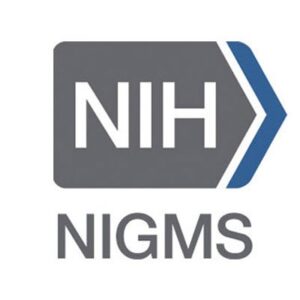

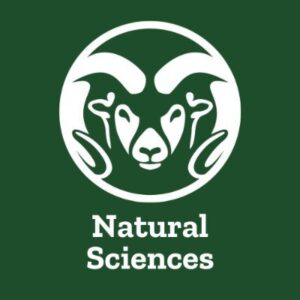
![]()
